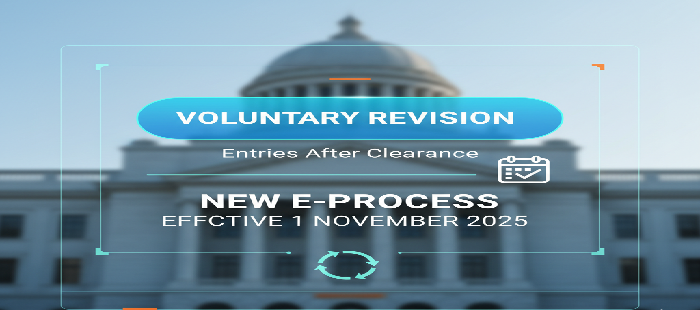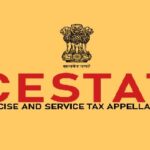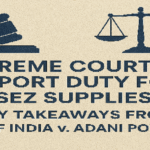Executive summary
Section 18A creates a formal route for importers and exporters to correct entries in a Bill of Entry, Shipping Bill, Bill of Export, or entries made under section 84, after out-of-charge or Let Export Order. The Central Board of Indirect Taxes and Customs has notified the Customs (Voluntary Revision of Entries Post Clearance) Regulations, 2025 effective 1 November 2025 to operationalise Section 18A through the ICEGATE common portal. There are two pathways:-
- Revision of entries where additional duty, if any, is paid with applicable interest.
- Revision of entries cum refund where at least one corrected entry creates a refund claim under section 27

A companion circular provides implementation guidance and field instructions for proper officers and trade on the new workflow and risk-based verification.
What Section 18A enables
Who can apply
Importers, exporters, and Customs Brokers, including authorised employees holding a Form G ID under CBLR 2018. Applications are filed electronically on the common portal with a digital signature.
Where to apply
At the same port where customs duty was paid for the relevant document.
What can be revised
One or more entries that were originally made under a single Bill of Entry, Shipping Bill, Bill of Export, or a section 84 entry. The application is accompanied by supporting documents relevant to self-assessment under sections 17, 46, and 50.
Two application types
- Electronic application for revision of entries
- Electronic application for revision of entries cum refund when at least one entry leads to a refund claim under section 27. The ARN date of such an application is treated as the date of refund claim for section 27 purposes
How the e-process works
- e-Filing and self-assessment
File on the common portal with digital signature, pay the prescribed document fee, and upload supporting documents. An application is deemed made and self-assessed when three conditions are met:
a) the entries are accepted by the customs automated system and an Acknowledgement Receipt Number is generated
b) duty and interest payable, if any, are paid voluntarily on the portal under section 28AA
c) a Revised Entry Reference is generated by the system.
2. Verification by proper officer
Verification is risk-based. The officer may call for documents or information to ascertain the nature of the revision and duty impact. For applications with a refund component, any requisition for documents is to be issued within ten working days from the date the Revised Entry Reference is generated
3. Refund handling
The refund application is checked for completeness. If complete, an acknowledgement in the prescribed form under the Customs Refund Application (Form) Regulations, 1995 is issued within ten working days of receipt. For paying interest on delayed refunds under section 27A, the application is considered received on the date of complete application acknowledgement or the date of re-assessment, whichever is later.
4. Outcome
If self-assessment is found incorrect, the officer may re-assess duty following natural justice and pass a speaking order. Where refundable, an order for refund is passed under section 27(2). After verification is complete, a Statement of Revised Entry is generated and made available electronically and transmitted to other agencies that had received the original entry.
Record-keeping and penalties
- Record retention
Keep the electronic application, certificate of revised entry, and all original supporting documents for five years from the date of revision and produce them when required.
- Penalties
Any contravention or abetment attracts penalty under section 158(2)(ii), in addition to other actions under the Act or any other law.
Interplay with refunds, interest, and audit
- Refunds and interest
Where a revision results in a refund, section 27 governs the claim and section 27A governs interest. The regulations set the deemed date for section 27 and clarify interest computation triggers for section 27A.
- Interest on additional duty
When revision increases duty, interest under section 28AA applies from the prescribed dates until payment.
- Post-clearance scrutiny
The risk-based verification and transmission of revised statements support audit trails for customs and partner agencies. The circular guides field formations on selection criteria and documentation during verification.
Illustrative scenarios
- Classification correction post clearance
A component was originally classified under a residual heading attracting a higher rate. After obtaining authoritative technical literature, the importer files a Section 18A application to correct the tariff item, uploads the literature as supporting documents, pays any differential or seeks refund as applicable, and receives a Statement of Revised Entry after verification.
- Valuation adjustment
After finalising transfer pricing or receiving a supplier credit note, the importer files a revision with the documentary trail and a valuation working under the Customs Valuation Rules. Where duty decreases, the application is filed as revision cum refund with section 27 claim deemed from the ARN date.
- Export incentive parameter correction
An exporter corrects FOB, quantity, or scheme parameters in a Shipping Bill post-LEO, enabling accurate transmission of the revised entry to partner agencies based on the system-generated statement.
What Section 18A is not
- cases where any audit under Chapter XIIA or search, seizure or summons under Chapter XIII has been initiated and intimated to the importer or the exporter concerned;.
- cases requiring refund where the proper officer has re-assessed the duty under section 17 or assessed the duty under section 18 or under section 84
Section 18A closes a long-standing gap between statutory procedure and the realities of trade. It acknowledges that lawful corrections may arise after out-of-charge or LEO, whether due to price revisions, stronger classification evidence, or the reconciliation of scheme parameters. With the new Regulations and the accompanying circular, the Government has established a clear, auditable pathway to revise a Bill of Entry or Shipping Bill post clearance. The process is digital, time bound, and anchored in the Act. It protects revenue through verification and interest where due, and it protects the assessee through defined timelines, a speaking-order requirement, and a formal Statement of Revised Entry that updates every downstream system.





